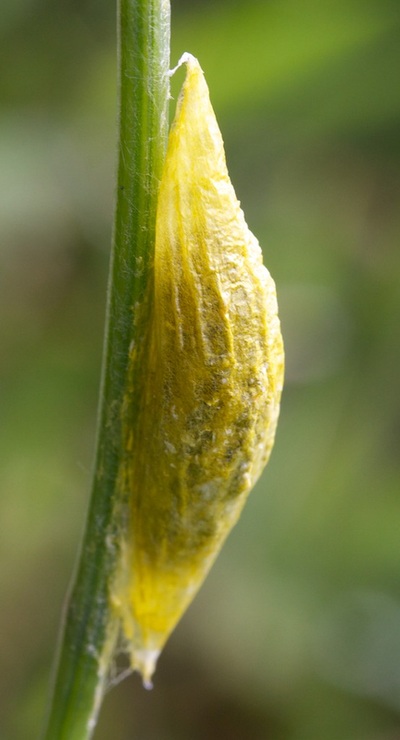54.010 Zygaena trifolii (Five-spot Burnet)
|
ws: 24-37mm, fw: 14-19mm;
subspecies decreta: Jul - early Aug; greater bird's-foot trefoil (Lotus pedunculatus); local on damp grass and heath and wetlands in SW.England & Wales, Horsey in Norfolk subspecies palustrella: late May-Jun; common bird's-foot trefoil (Lotus corniculatus); dry calcareous grasslands on North & South Downs from Hampshire to Kent, ID: Almost indistinguishable from Z.lonicerae (Narrow-bordred Five-spot Burnet). The following features may help: Location: Z.lonicerae is widespread over England and Wales; Z.trifolii has a much more restricted distribution as above. Merging of spots 3+4: frequent in Z.trifolii, rare in Z.lonicerae Flight: ssp palustrella flies earlier than Z.lonicerae, but there is overlap at the end of its flight; ssp decreta overlaps with Z.lonicerae for most of its flight. The following three features are also given in MBGBI2: 1. Forewing length:breadth - relatively short in Z.trifolii Drawings of Z.trifolii in MBGBI2, Waring and images of live moths from various websites have fw ratios ranging from 2.7-3.0; for Z.lonicerae the range is 2.6-2.8 (with 2 outliers of 2.5 and 3.0) - so this feature cannot be used to separate the species. 2. Forewing and hindwing more rounded at apex in Z.trifolii: whilst this may be apparent in comparing some images of the 2 species it does not seem to provide a reliable distinction. 3. Dark border of hindwing usually broader in Z.trifolii. It is probably true that the border averages broader in Z.trifolii (hence 'Narrow-bordered' for Z.lonicerae) but this is of little help in identifying an individual. There do not seem to be any genital differences between these 2 species. |
The only really reliable way of identifying Z.trifolii as an adult seems to be to grow it from a positively identified larva. The larva of Z.lonicerae has very long hairs (setae) and this should provide a ready distinction from the short-haired larva of Z.trifolii.
A specimen found away from one of the known areas for Z.trifolii should be Z.lonicerae,
A specimen found in Cornwall or Devon is probably Z.trifolii
A specimen with spots 3+4 merged is much more likely to be Z.trifolii.
A specimen found on the North or South Downs in May or the first half of June is very likely to be Z.trifolii
There do not seem to be any reliable features that will definitively identify Z.trifolii with unmerged spots found at a suitable location away from SW.England in late June or July. The identity of specimen §1 is therefore uncertain - however it was found at a known location for Z.trifolii in association with several individuals that did have merged spots.
A specimen found away from one of the known areas for Z.trifolii should be Z.lonicerae,
A specimen found in Cornwall or Devon is probably Z.trifolii
A specimen with spots 3+4 merged is much more likely to be Z.trifolii.
A specimen found on the North or South Downs in May or the first half of June is very likely to be Z.trifolii
There do not seem to be any reliable features that will definitively identify Z.trifolii with unmerged spots found at a suitable location away from SW.England in late June or July. The identity of specimen §1 is therefore uncertain - however it was found at a known location for Z.trifolii in association with several individuals that did have merged spots.
Immature stages
§1 Winterton, Norfolk; 22/07/2008; male; fw 15mm
§2 Meshaw Moor, Devon; 24/06/2016
All images © Chris Lewis
§2 Meshaw Moor, Devon; 24/06/2016
All images © Chris Lewis
Page published 17/04/2012 (§1); larvae & cocoon added 05/07/2014; §2 added 06/04/2017






